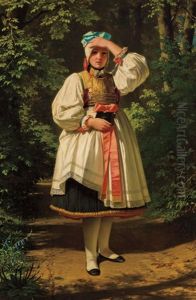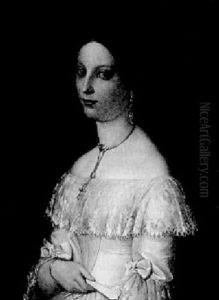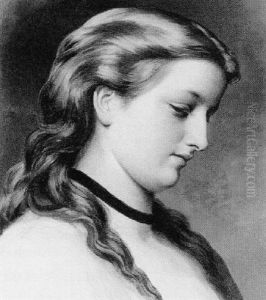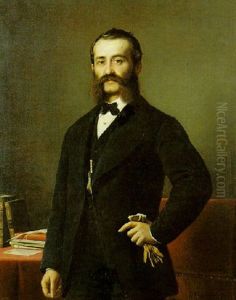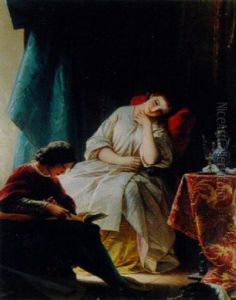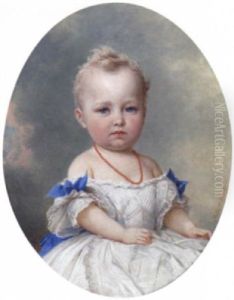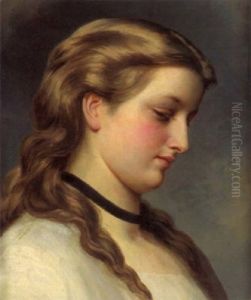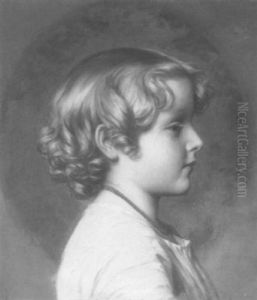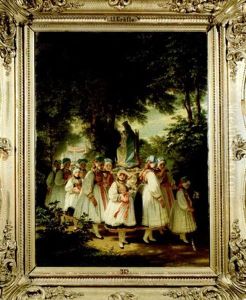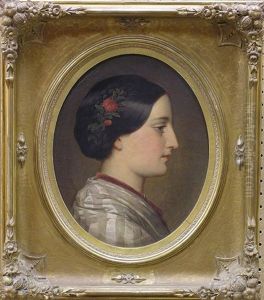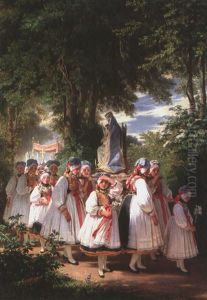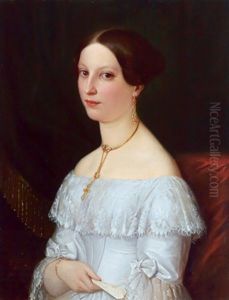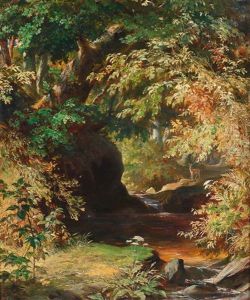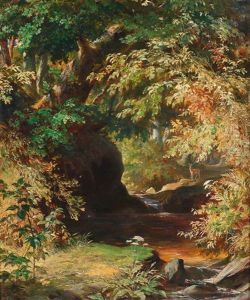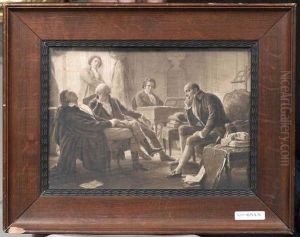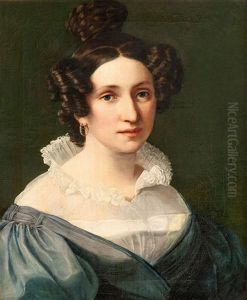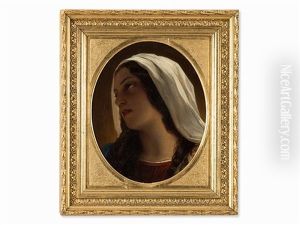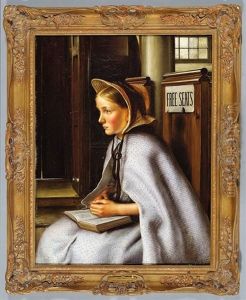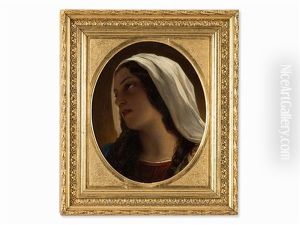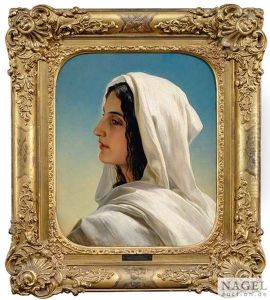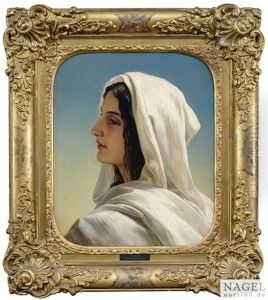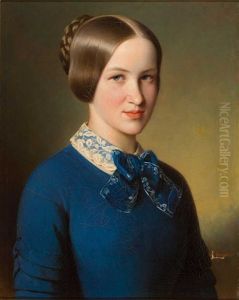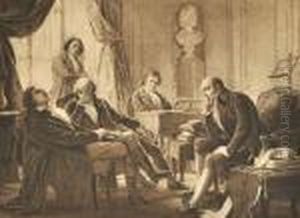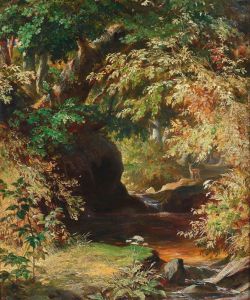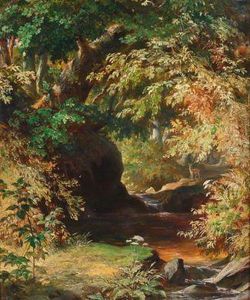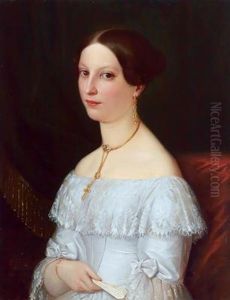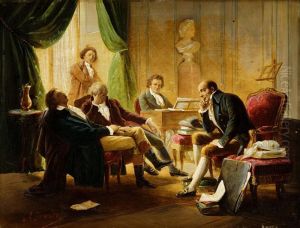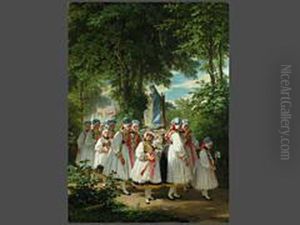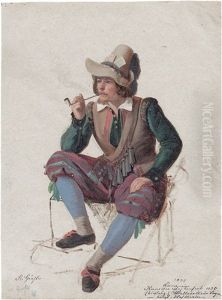Albert Graefle Paintings
Albert Graefle, a German painter, was born in 1807 and died in 1889. He is often associated with the Düsseldorf school of painting, a group of artists who were active in Düsseldorf in the 19th century and were known for their detailed landscapes, historical scenes, and genre paintings. Graefle, however, distinguished himself within this movement through his dedication to genre painting, often focusing on scenes of everyday life that highlighted the customs, emotions, and social dynamics of his time.
Despite being less widely known than some of his contemporaries, Graefle's work was appreciated for its meticulous attention to detail, vibrant use of color, and the ability to convey narrative and emotion through his depictions of simple, everyday scenes. His paintings often feature rural and domestic settings, capturing moments of joy, contemplation, and the simplicity of 19th-century life. These works not only provide insights into the social and cultural contexts of the period but also showcase Graefle's skill in rendering textures, light, and atmosphere.
Throughout his career, Albert Graefle contributed to the development of genre painting in Germany, influencing later artists and continuing the traditions of the Düsseldorf school. His works, while not as prominently recognized in the broader art historical narrative, hold a valuable place in the study of 19th-century European art for their portrayal of the human condition and the everyday life of the era. Graefle's paintings are preserved in various art collections and museums, serving as a testament to his artistic legacy and the rich tapestry of 19th-century German painting.
